Our Project’s
Navjeevan Gramoday Pratisthan
Watershed management

Need of Watershed – Problem Statement
Because of climate change, rainfall and temperature pattern in the region is also changing resulting in increase in extreme events like drought. Some of the problems due to increase in drought are as follows:
– water stress for livelihood and daily activities
– loose of livelihood opportunities among the rural citizens
– loss in agricultural production, area and productivity
– increase stress in animal population
– Reduction in fodder availability
Ridge To Valley Concept
The approach intends to conserve every drop of water starting at the ridge and reduce to a considerable extent both the surface run-off volume and the velocity of water.
Soil and Water conservation Works
Treatments Under Crop Cultivation and Afforestation
CCT, HCCT, WAT, RCCT, Gully Plug, Stone Bund, Stone Outlet, Horticulture
Drainage Line Treatments
LBS, Gabion Structures, Check Dam
Impact of Watershed Works after implementation of various projects
• Water availability period in water bodies like Percolation Tank, Check Dam, wells and bore wells has increased.
• Productivity of farmers has increased, and the lifestyle has been improved.
• Adaption of new techniques and methods in farming
• Reduction the climate change risk and increment in the oxygen level
• Migration of landless farmers has reduced
Well construction
In Rajewadi, Dist Beed Villagers had to walk several kilometers to find water in privately owned bore wells whose owners aren’t always accommodating. It is especially true for lower castes and tribes, who rarely get permission to fill their buckets.
To counter the issue of private property, we bought two plots of land (500 m2 each) this spring to build the wells. This was achieved with the help and in the name of the Panchayat (the local council). After several months of construction work, the wells were ready ! Each is 12-meters deep and has a 10,7-meter diameter.
Whereas some bore wells, as deep as 20 meters, were dried out, our team’s expertise and the elders’ wisdom allowed us to identify the optimal location to reach the water.
we handed the wells to the Panchayat: the 1200 inhabitants of Rajewadi are happy and relieved to have an easy access to a source of clean water!



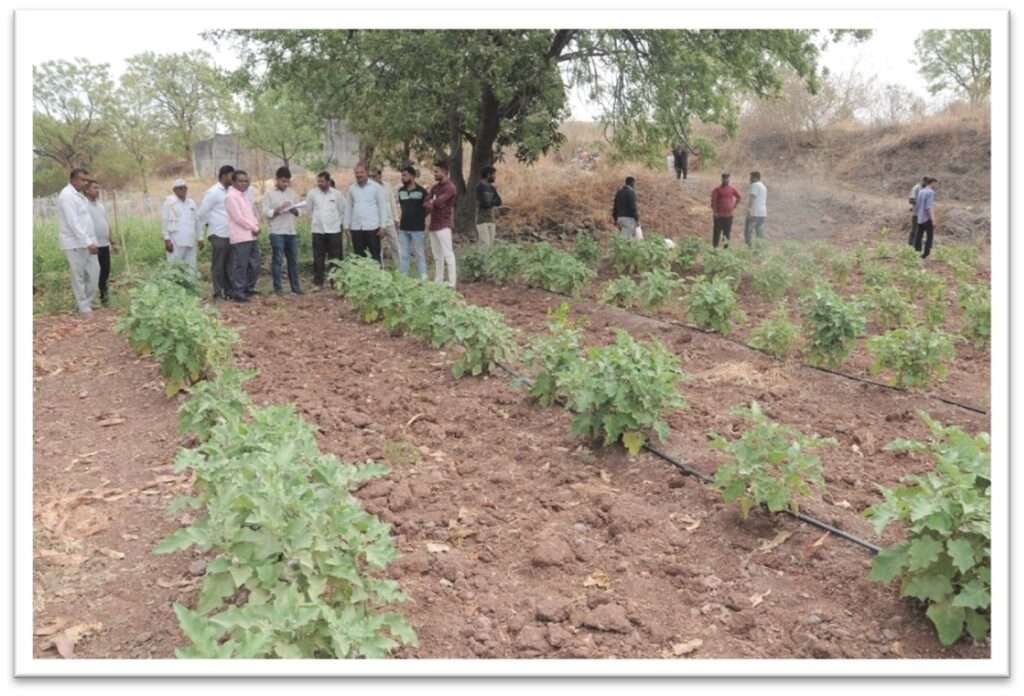
Drip / Sprinkler Irrigation Systems
In the year 2022-23 In WDF project Devgaon, Dist.Ahmednagar jointly supported by NABARD and Cummins India Foundation we have provided Drip and Sprinkler irrigation systems to 71 needy farmers as well as in Rajewadi, Dist.Beed we finalized the installation of 20 drip irrigation systems. We selected farmers whose plan was to convert their fields into orchards:
To optimize the available space, some farmers planted low crops next to the small trees. Indeed, crops such as potatoes, peanuts and vegetable species (eggplants, carrots) won’t cast a shade on trees: there is no risk of restraining the trees’ growth. Other farmers will convert to growing vegetables, because they are easier and more profitable to farm than cotton or soy.
The task of placing the dripping devices was entrusted to Keshor Patangue, a young entrepreneur from Sonawala, Dist.Beed He proved to be an excellent choice, determined to demonstrate his skills. His efforts and good work pleased the farmers and gained him a reputation for seriousness and competence. As a consequence, others have hired him for similar work.
In Dongar Pimpla, Dist Beed. Babasaheb Andhale and his wife Sangita were proud to show us their young cabbage plants that have doubled in size thanks to the drip irrigation system’s regular and targeted water input.
Training courses on innovative farming techniques
To increase the growth of income of farmers we implements the trainings on various subjects like innovative farming techniques, with a focus on sustainable water management practices, organic farming, Dashparni Ark, Beejsanskar, Food processing, awareness of government schemes, efficient use of water, moders farming techniques, water budgeting, mitigation of climate change risk, capacity building of village watershed committees and SHGs etc
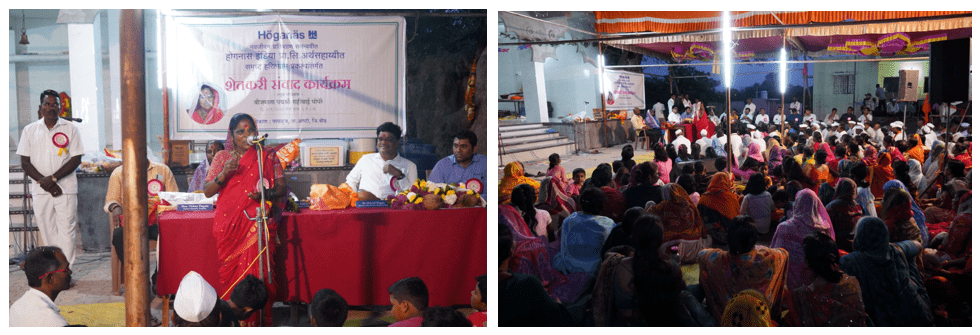
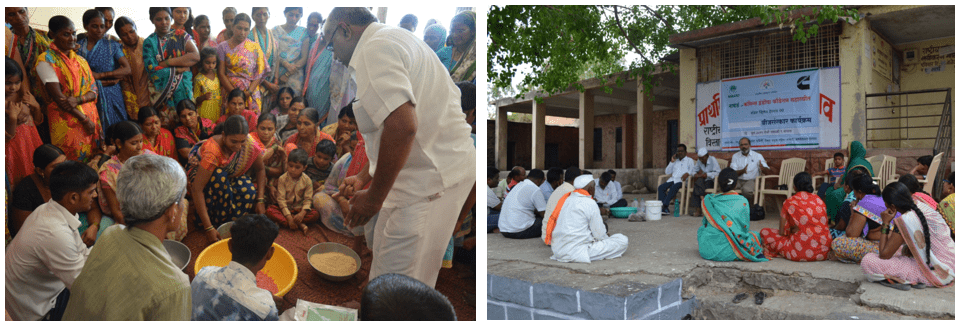


demo plots
In the villages of Dongar Pimpla and Dhavadi in Beed District demo plots were set up to test various combinations of crops and innovative irrigation techniques. As explained above, we wish to encourage farmers to visit these plots and adapt those methods to their own fields,
Mr. Sahebrao Kendre was eager to put his land at our disposal for this purpose. We planted rows of tomatos, alternating with chili. Then, to counter the scarce availability of water, we used drip irrigation and mulching ; we also installed support for the crops to grow higher ensuring higher quality and yield (Mr Kendre didn’t know such a technique existed).
With a Rs. 34 000 (453 €) investment, M Kendre derived a profit of Rs. 132 000 (1 760 €), a significant sum, compared to the previous Rs 74 000,( 986 €) he gained when harvesting tomatoes of a far lesser quality. Currently, his crops are growing well: no doubt, these vegetables will be a good source of revenue!
In Mr. Mohan Pawar’s plot, we implemented a multiple cropping system, aimed at forstalling price volatility. Gumbos, peas, squashes, eggplants and cabbage were planted. Mr Pawar was very satisfied with this experiment. For the first time, he earned almost Rs. 80 000 (1 060 €). When he cultivated only one crop, Mr Pawar was forced to use an intermediary to sell his produce, incurring a high margin cost. Now, thanks to his diversified production, he can sell directly in the local markets. Furthermore, these specific vegetables are much less sensitive to disease and pest damage. He revealed his strategy for next year: focus on vegetables with a rapid 3-month growth and harvest twice in the season. Before we provided Mr Pawar with a drip system, he couldn’t grow anything on that plot of land.
Soil analysis
It is important to analyze the properties of the ground in order to optimize the yield. we called upon KVK (Krishi Vigyan Kandra), the Centre for Agricultural Sciences, to have 30 soil samples analyzed.
The farmers were made aware of the importance of such tests, they help us decide which species of trees to plant in each field by identifying the characteristics of the soil. The test results revealed the nature of the soil (acid, alkaline) and the farmers could determine whether the soil had stored enough nutritional elements (potassium, azote, and phosphorus) to host the plants… Some farmers realized they used too much fertilizer; others, that they didn’t use the appropriate ones!

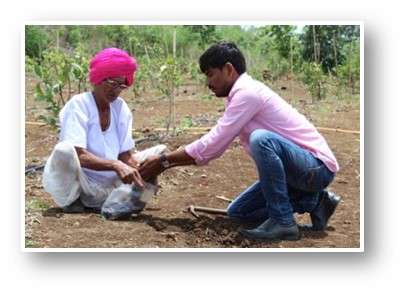
Desiltation





Case study :Z.P. SCHOOL WALL COMPOUND CONSTRUCTION &SCHOOL UPGRADATION
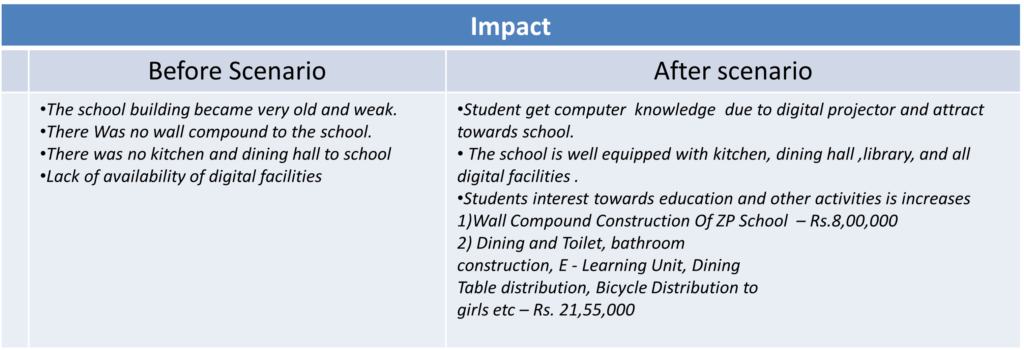


Case study : Drainage line treatment
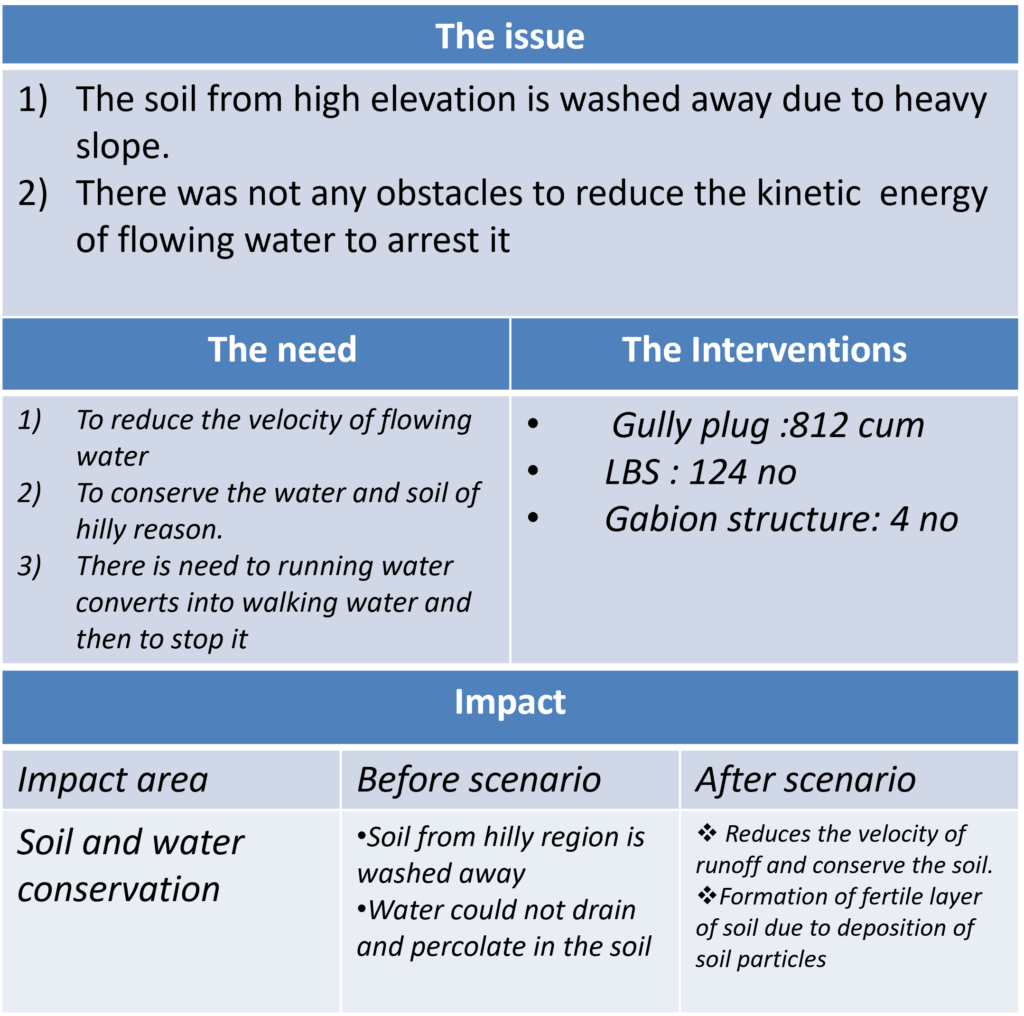
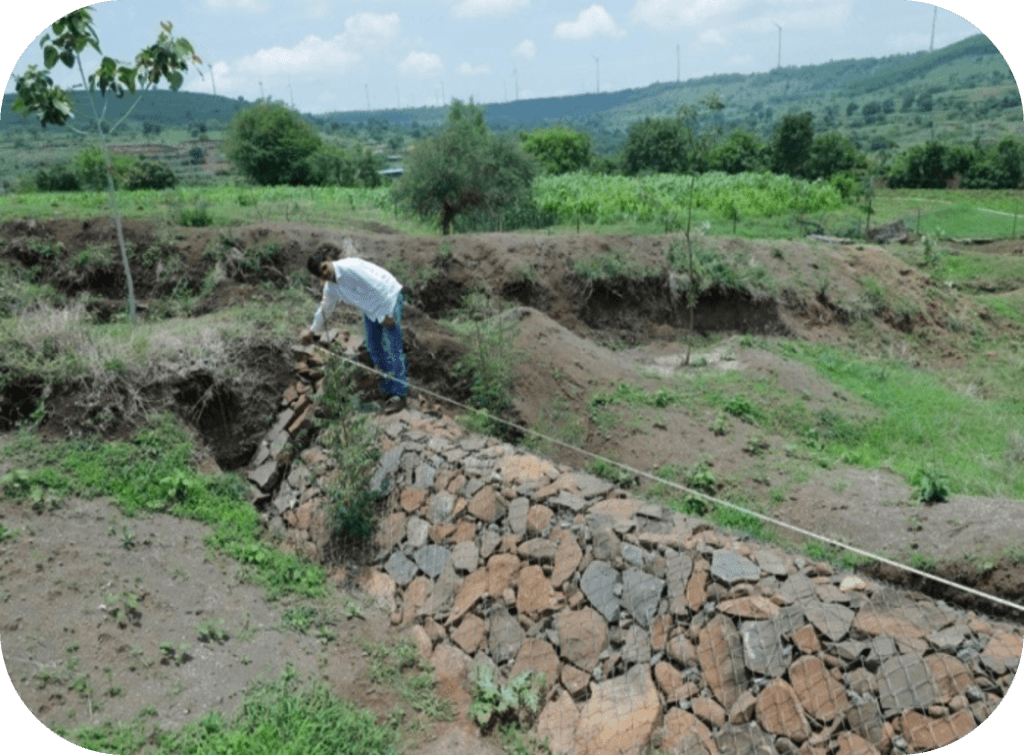



Tree Plantation
In each project, we plant the rare, local and medicinal trees. There are two main benefits to this activity: it contributes to the fight against drought and it secures a new source of income. And it helps to reduce the climate change risk.
“It is imperative not only to engage in tree planting but also to prioritize the ongoing maintenance of trees. Proper maintenance is essential for their long-term health and vitality, ensuring that they can continue to provide numerous environmental, ecological, and aesthetic benefits to our communities and ecosystems.

A Miyawaki forest is a pocket forest created by planting native trees, shrubs, and groundcover plants in small urban areas. The Miyawaki technique involves planting two to four different types of indigenous trees within every square meter. The plants are planted close together so that they receive sunlight only from the top and grow upwards rather than sideways.
The Miyawaki method was developed in the 1970s by Japanese botanist Akira Miyawaki. The basic objective was to densify green cover within a small parcel of land.
Some benefits of a Miyawaki forest include:
Growing rapidly
Increasing soil- and forest-biodiversity
Increasing carbon sequestration
Increasing forest resilience
Reducing maintenance costs



Case study : WATER ABSORPTION TRENCHES (WAT )



